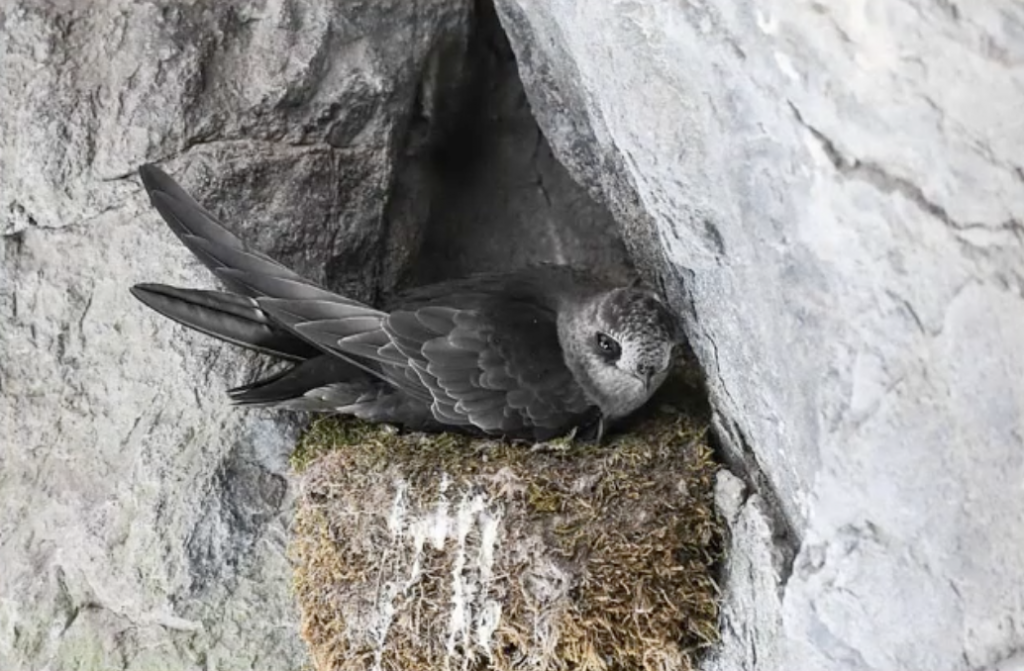This is a recap of our program from October 27th, 2020. For those of you who missed it, don’t sweat—we recorded the session! You will just need to sign-in to view our recording for now. This is so we have an idea of whether we are getting views from BVN members or new individuals. We promise we won’t be sending any spam emails!
SUMMARY
Black Swifts are the largest swift species in North America. These graceful and agile aerial insectivores spend most of their lives on the wing and choose often inaccessible waterfalls and cliffs to nest on. Banff National Park was the first inland nesting location identified for Black Swifts back in 1919, and yet how much do we know about their wild and wacky lifestyles? We know that Black Swifts are in decline and now listed as endangered under Canada’s Species at Risk Act. The stakes are high for this high altitude feathered torpedo and monitoring these elusive birds is a challenge. This talk looked at how researchers are having to employ creative monitoring tools and approaches to meet these challenges – as novel and unique as the Black Swifts they study.


GUEST SPEAKERS
Jen Reimer: Jen Reimer is a Resource Management Officer with Parks Canada in Banff. She has been leading the Black Swift monitoring program in Banff since 2015. Her other species at risk projects include barn swallow, bank swallow and bats. Her graduate work focused on sea bird nesting impacts and the implementation of Canada’s first marine protected area for sea birds – The Scott Islands. Jen has travelled up and down the west coast of Canada conducting sea bird and marine mammal work, and to Australia to study the Eastern Whipbird. She has been a long-standing support to the MAPS program in Banff & Jasper and manages a BBS route in SW Alberta.